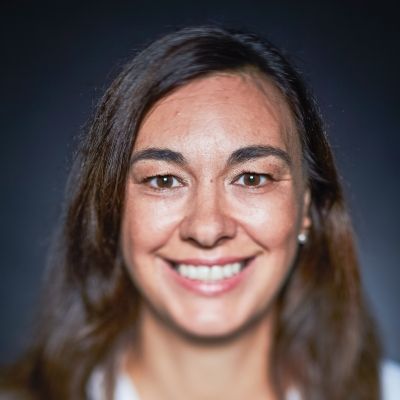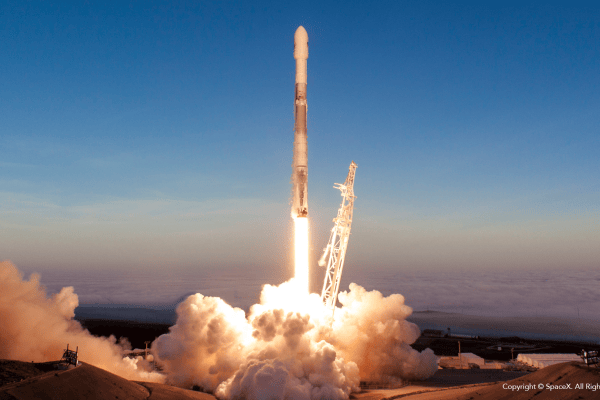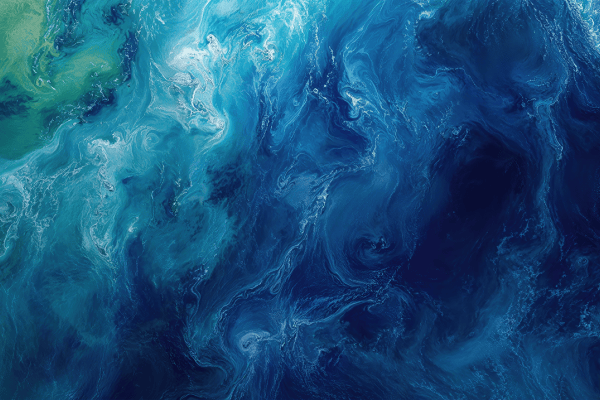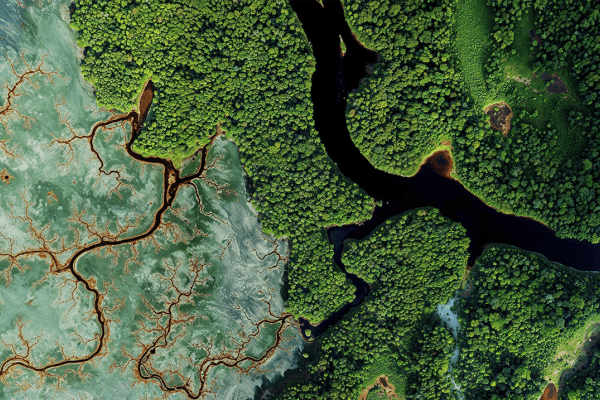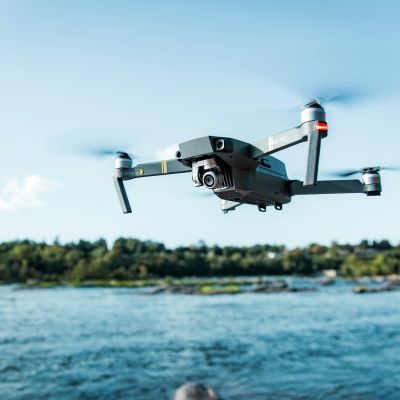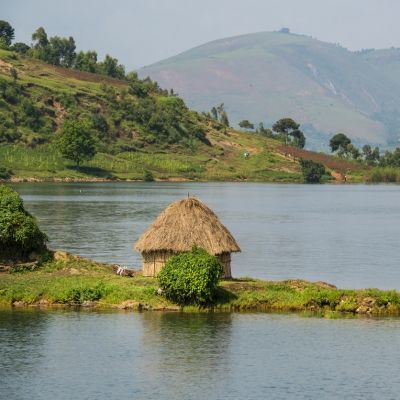SSPIRIT Kick-Off: Project Partners, Advisory Board, Blue Cluster, and Flanders Space Unite to Tackle Plastic Pollution From Seabed to Space
Plastic is everywhere. This material is very diverse in shape, size, color, and densities. It also accumulates in different compartments of our water ranging from the intertidal zone, the water surface, the water column to the seabed. Moreover, it's very labor-intensive to manually spot and sample plastic pollution in our water. That's where the combination of multiple remote sensing technologies – like aerial, underwater, and satellite images – comes in as an efficient, innovative detection solution to keep our environment healthy.
With this objective in mind, June 2025 marked the kick-off of SSPIRIT, a three-year cluster Strategic Basic Research (cSBO) project funded by VLAIO. SSPIRIT stands for 'From Seabed to SPace: Identifying and quantifying plastic litteR with Innovative remote sensing Technologies'.
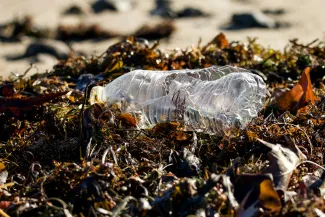
Project Kick-Off
On 12 and 25 June respectively the first SSPIRIT project meeting and the Advisory Board meeting took place. These meetings brought together all project partners from VITO, VLIZ, KU Leuven, the University of Antwerp, the University of Ghent, the Advisory Board members, Blue Cluster, and Flanders Space to set out the objectives and collaboration framework for the years ahead to tackle the plastics challenge. In an interactive session, we collected the expectations of the Advisory Board for this project.

Project partners at the first SSPIRIT project meeting at VITO in Berchem, Belgium
SSPIRIT's Ambitions
The SSPIRIT project aims to identify and quantify plastic litter (micro-, meso- and macroplastics) across multiple compartments – from the intertidal area, the water surface and the water column to the seabed of the Belgian part of the North Sea and the Scheldt estuary – using state-of-the-art remote sensing technologies, advanced (AI) data processing and modelling. By bridging disciplines, the project seeks to provide a clearer understanding of the pathways of plastic pollution.
SSPIRIT's objectives:
-
Improve the science case for a dedicated satellite mission
-
Evaluate feasibility of remote optical detection of plastic pellets
-
Improve the recognition potential for macro-litter using cameras (GoPro) and acoustic (Blueview and multibeam) methods
-
Improve the assessment of potential microplastic hotspots using remote sensing techniques
-
Improve the performance of a depth-averaged (Eulerian) particle transport model to predict turbidity (i.e., the cloudiness or haziness of the water) and associated microplastic concentrations
-
Improve the performance of a depth-averaged (Eulerian) particle transport model to predict pellet loss dispersal

Illustration of the remote sensing technologies used in the SSPIRIT project to detect plastic pollution across the different water compartments
Innovative Technology
During the kick-off meetings, we shared six technology cases and an innovation accelerator plan. For each technology case, we presented the challenges, the specific objectives, the approach, and the expected outcome.
SSPIRIT's technology cases:
-
Optical VNIR-SWIR (Visible Near Infrared and Short Wave Infrared Spectroscopy) satellite mission (satellite monitoring of plastics)
-
Ecogeomorphology from drones as proxy for stranded pellets (indirect detection of stranded pellets)
-
Optical VNIR-SWIR camera and smartphone technology (direct detection of stranded pellets)
-
Camera and acoustic detection of litter in the water column
-
Multibeam detection of litter on the seabed
-
Suspended particulate matter (SPM) (i.e., tiny solid or liquid particles that are suspended in the air or water) or turbidity as a proxy
SSPIRIT will also establish an Innovation Accelerator, a structure that helps Advisory Board members and industry use the developed tools and knowledge in practice. Throughout the project, we will discuss, further refine, or newly develop valorisation trajectories. Our team will initiate at least five valorisation trajectories and follow-up initiatives to ensure continuity after the project will have ended.
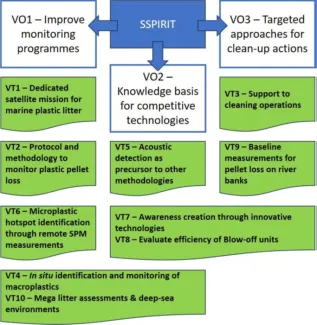
Schematic visualisation of the SSPIRIT valorisation trajectories
'Access to the state of the art in remote sensing' is the most expressed expectation from the project by its Advisory Board members. One Advisory Board member articulates this as follows: “State of the art information is indispensable to our business. Our organisation is an SME. We follow several SBO and similar projects and we often get interesting approaches that we would have missed without these projects."
The Role of VITO Remote Sensing
VITO coordinates the SSPIRIT project and is in charge of the overall experiment design and data acquisition. For the technology cases, VITO is responsible for advancing the science case for a dedicated optical VNIR-SWIR satellite mission for plastics monitoring (technology case 1). In addition, VITO will work towards the identification of ecological and geomorphological parameters that serve as a proxy for plastic pellet densities and that could be observed by drone imaging (technology case 2). In technology case 3, VITO will use an optical VNIR-SWIR camera and smartphone technology for the direct detection of stranded pellets.
Looking Ahead
With this kick-off, the SSPIRIT project is ready to move forward with experimental design for the data acquisition campaigns supporting the different technology cases. The Advisory Board members will play a key role in the valorisation trajectories and follow-up initiatives.
Project partners:

In collaboration with clusters:

Funded by:


